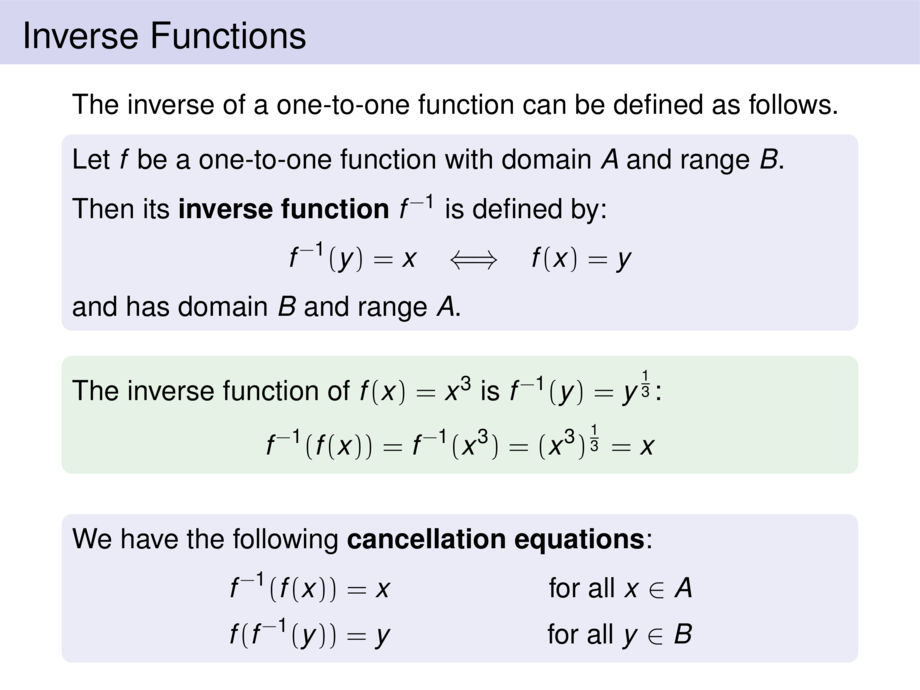



































































































204/353
\begin{frame}
\frametitle{Inverse Functions}
The inverse of a one-to-one function can be defined as follows.
\pause
\begin{block}{}
Let $f$ be a one-to-one function with domain $A$ and range $B$.
\medskip
Then its \emph{inverse function} $f^{-1}$ is defined by:
\begin{talign}
f^{-1}(y) = x \;\;\iff\;\; f(x) = y
\end{talign}
and has domain $B$ and range $A$.
\end{block}
\pause
\begin{exampleblock}{}
The inverse function of $f(x) = x^3$ is $f^{-1}(y) = y^{\frac{1}{3}}$:
\begin{talign}
f^{-1}(f(x)) = f^{-1}(x^3) = (x^3)^{\frac{1}{3}} = x
\end{talign}
\end{exampleblock}
\pause\medskip
\begin{block}{}
We have the following \emph{cancellation equations}:
\begin{talign}
f^{-1}(f(x)) = x && \text{for all $x \in A$}\\
f(f^{-1}(y)) = y && \text{for all $y \in B$}
\end{talign}
\end{block}
\end{frame}

